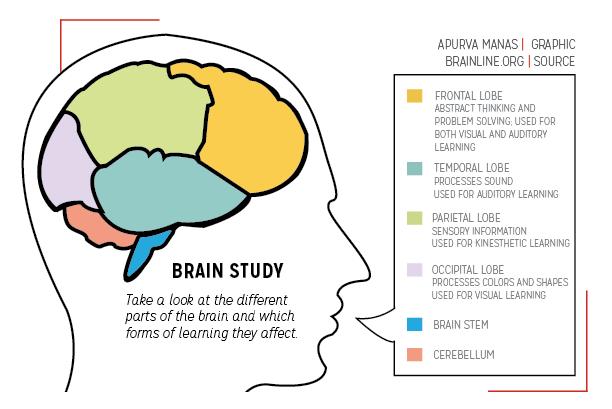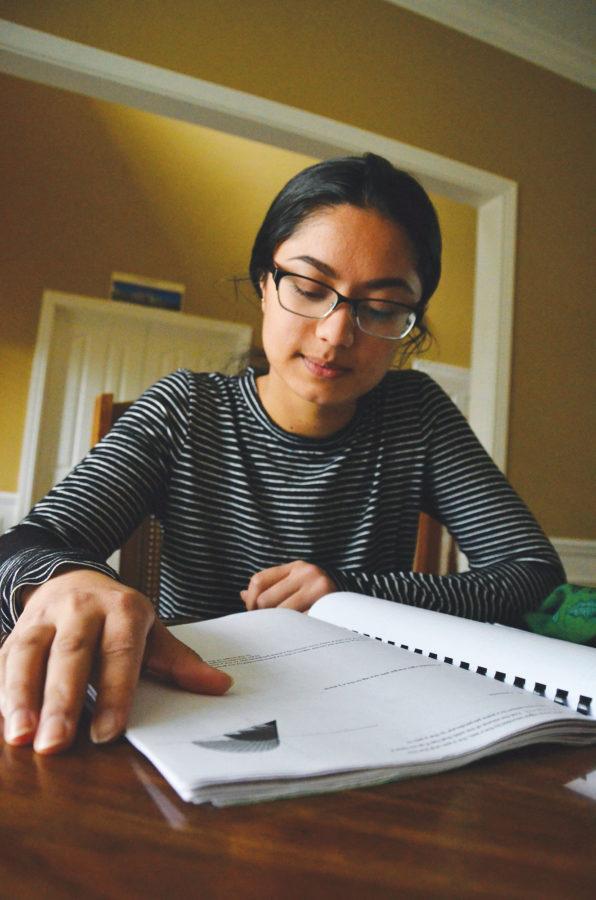STUDYING, SERIOUSLY
As testing season approaches, students begin to study vigorously with various methods
The first week of may is approaching, meaning AP testing and all the cramming for final exams will soon begin. Michael Wang, National AP Scholar and senior, knows that feeling more than most students. Wang, having taken 18 AP exams and received a 5 on all of them, actively prepares for those AP exams, but not in the way one might expect.
Wang said, “To tell the truth, I didn’t do a lot of studying right before the tests. If I did, it was mostly for the history classes. I tend to find, (especially) for science classes, that if you learn it well the first time through, you could apply those concepts the whole year, so it’s more about being consistent throughout the year than it is really trying to study a lot before the end.”
When studying for AP exams, Wang said he finds himself reviewing course knowledge differently than his classmates. Wang said he is an auditory learner; he has to hear information in order to truly learn it. He said he takes few notes for assigned readings and instead absorbs the content through in-class lectures; thus, studying for him is looking over some of the textbook to jog his memory and reading notes aloud. The other known learning styles are visual and kinesthetic learning.
“(As an auditory learner) a lot of the way that my learning works is that when I do recall during tests, I usually hear a teacher lecturing about it again, or I can hear my voice going over the material,” he said.
In a recent study from Stanford University and Radboud University Medical Center, researchers found after four weeks of training in the visual loci method, a method of memorization connecting information to images typically of familiar landmarks, people not trained in memorization skills were able to memorize the same amount of information and words as memory athletes. Yet, when studying for tests, it is common for students to naturally memorize information regardless of the method they use; the material consumed before tests is now part of their memory. Thus, students question if their methods of studying are truly the most effective way for them.

While many ask which learning style is the most effective, the reality is there is no best learning style. Students prefer to learn in several different ways, according to freshman resource teacher Briana Metcalf. She said while some students may be auditory learners, like Wang, others might be visual or kinesthetic and would most likely study in the same way.
“I think the major advantage is finding what works best for each student so that they can do their best in the class,” Metcalf said.
However, with more teachers exploring various teaching styles, many have moved from 90-minute lectures to more hands-on or visual teaching. Wang said in classes during lectures, he processes information faster the first time around and studying comes more easily when reviewing the material; however, for classes like engineering, where the class is more visual and kinesthetic, he said he has to work harder in order to master the material.
“Most classes are structured in a way that benefits from learning it earlier. For classes like math, where you have a series of lessons followed by a test, if you don’t understand lesson one really well the first time, it really hurts your understanding of the second part, the third part, then the fourth part, so before the test you have to start back from the ground,” Wang said.
Metcalf said students will be able to work with any materials for classroom content by mixing the three learning styles in class.
Metcalf said, “There is still a certain aspect that if you are an auditory learner and your teacher likes to stand and deliver, then you are probably going to be more successful in that class than maybe other learners. If a kinesthetic learner is in an (introduction) to transportation class, they will probably get an ‘A.’ If a visual learner has a teacher that loves YouTube videos, they will probably absorb the information better. So, everyone has a chance, particularly since teachers are more aware of this now, and they are trying to sort of vary the modes of delivery.”
Sophomore Seema Dhungana, who plans to take three AP exams this year, said she agrees students can learn in all three ways; she said having a greater focus and variety while learning can help with faster studying.
“A visual may help people recall the idea, but auditory teaching increases repetition on the topic, leading to greater understanding of the concept. Kinesthetic learning can cause people to make associations with an activity which could be more memorable for students,” Dhungana said.
Knowing well the testing period is approaching, Wang said he encourages his fellow classmates to learn the way he does in the classroom to alleviate the stress before the big tests.
Wang said, “Part of the reason I don’t take notes during class is that I find the action of taking notes will distract me from trying to understand it. I think during class, some students would benefit from spending less effort trying to think of what you want to write down and what type of notes you want to take and put more attention (into) what you are listening (to) at that moment.”

































![AI in films like "The Brutalist" is convenient, but shouldn’t take priority [opinion]](https://hilite.org/wp-content/uploads/2025/02/catherine-cover-1200x471.jpg)








































![Review: “The Immortal Soul Salvage Yard:” A criminally underrated poetry collection [MUSE]](https://hilite.org/wp-content/uploads/2025/03/71cju6TvqmL._AC_UF10001000_QL80_.jpg)
![Review: "Dog Man" is Unapologetically Chaotic [MUSE]](https://hilite.org/wp-content/uploads/2025/03/dogman-1200x700.jpg)
![Review: "Ne Zha 2": The WeChat family reunion I didn’t know I needed [MUSE]](https://hilite.org/wp-content/uploads/2025/03/unnamed-4.png)
![Review in Print: Maripaz Villar brings a delightfully unique style to the world of WEBTOON [MUSE]](https://hilite.org/wp-content/uploads/2023/12/maripazcover-1200x960.jpg)
![Review: “The Sword of Kaigen” is a masterpiece [MUSE]](https://hilite.org/wp-content/uploads/2023/11/Screenshot-2023-11-26-201051.png)
![Review: Gateron Oil Kings, great linear switches, okay price [MUSE]](https://hilite.org/wp-content/uploads/2023/11/Screenshot-2023-11-26-200553.png)
![Review: “A Haunting in Venice” is a significant improvement from other Agatha Christie adaptations [MUSE]](https://hilite.org/wp-content/uploads/2023/11/e7ee2938a6d422669771bce6d8088521.jpg)
![Review: A Thanksgiving story from elementary school, still just as interesting [MUSE]](https://hilite.org/wp-content/uploads/2023/11/Screenshot-2023-11-26-195514-987x1200.png)
![Review: "When I Fly Towards You", cute, uplifting youth drama [MUSE]](https://hilite.org/wp-content/uploads/2023/09/When-I-Fly-Towards-You-Chinese-drama.png)
![Postcards from Muse: Hawaii Travel Diary [MUSE]](https://hilite.org/wp-content/uploads/2023/09/My-project-1-1200x1200.jpg)
![Review: "Ladybug & Cat Noir: The Movie," departure from original show [MUSE]](https://hilite.org/wp-content/uploads/2023/09/Ladybug__Cat_Noir_-_The_Movie_poster.jpg)
![Review in Print: "Hidden Love" is the cute, uplifting drama everyone needs [MUSE]](https://hilite.org/wp-content/uploads/2023/09/hiddenlovecover-e1693597208225-1030x1200.png)
![Review in Print: "Heartstopper" is the heartwarming queer romance we all need [MUSE]](https://hilite.org/wp-content/uploads/2023/08/museheartstoppercover-1200x654.png)




